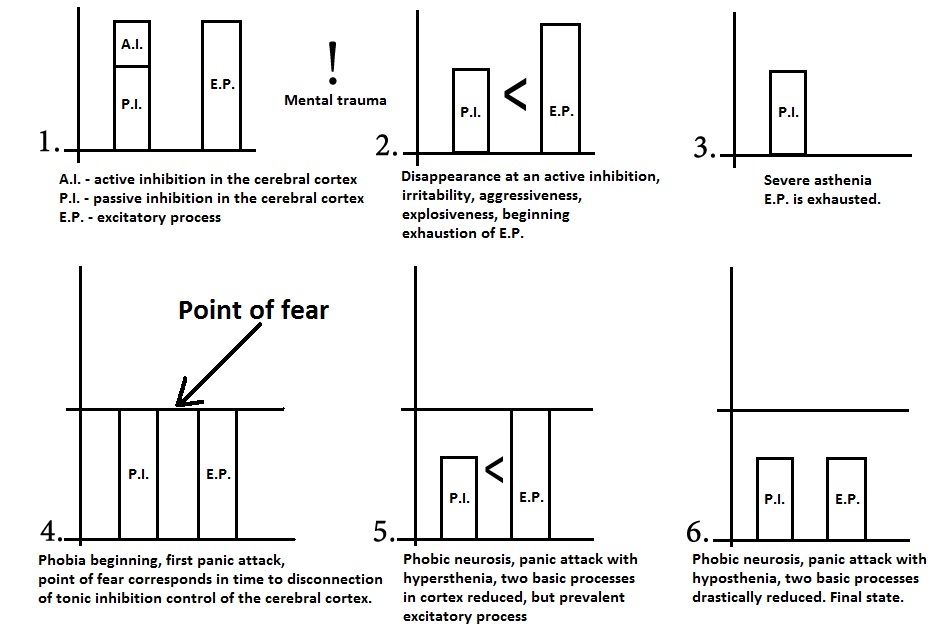Summary Scheme
The sequential development of panic disorder (and severe phobias)
Posted 2 December 2011

|
The key points
The development of panic disorder (or severe phobias) is possible only in the special group of persons, known as an anancast type. The beginning of the disease is connected with the mental trauma. From this moment it will take some time until the phobia reveals itself. This time is required for the damage of energy production in the mitochondria. The hyper load of this power generating organelle (the hyper load is associated with the permanent stress caused by trauma) leads to its breakage. Overloading of the mitochondria is connected with a constant overstrain of the main processes (excitation and inhibition of neurons) in the cortical neurons. The active inhibition in the cortex disappears with the collapse of energy production (I suppose that this is associated with decreased function of GABAergic neurons of the cerebral cortex).
Next, falls down the excitatory process. Worsening of energy shortages disables the passive inhibition of the cortex transmitted on to underlying structures. Disinhibition leads to the manifestation of fear. Normally, the tonic top-down inhibitory control suppresses the lower departments of the brain, and this does not allow the fear to appear. As is known, the subordinate tonic inhibitory control emanates from the frontal cortex of the brain.
Underlaying departments of the brain are under the constant inhibitory control of the cerebral cortex. The generation of inhibitory control at the hyposthenia is impossible. The treatment of this condition is possible only with the energotropic (energy producing) drugs. The energotropic therapy can restore the original state, going through all the stages in reverse order.
Analysis of the possible pathogenesis of simple schizophrenia (ICD-10 Version:2010, F 20.6) and symptoms of "Frontal lobe syndrome" (ICD-10 Version:2010, F 07.0 - "Organic personality disorder") indicates similarity of their morbid anatomy and pathophysiology. The observed decrease in reelin and GAD67 production has the following consequences. Lessening of the density of dendritic spines and the reverse development (degeneration) of extensive interconnectedness as well as inter-regional connections causes "separation" (in various degrees) of the frontal lobe from other areas of the brain.
The symptoms such as: a defect of the associative process, blunting of the affect and a loss of volition are fully explained by the given reason (a "separation" of the frontal cortex as result of the reduced density of dendritic spines). www.totalpsychiatry.org